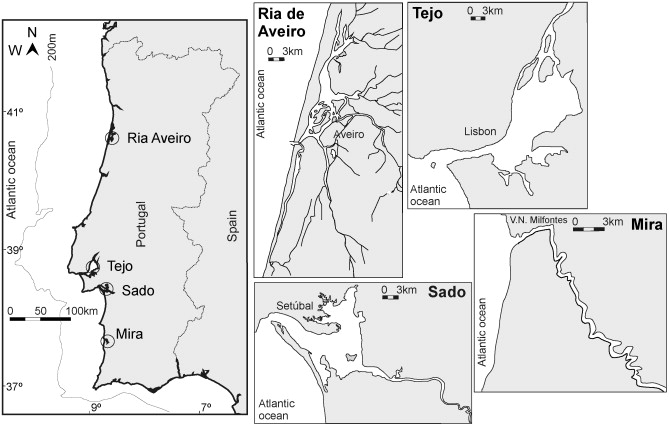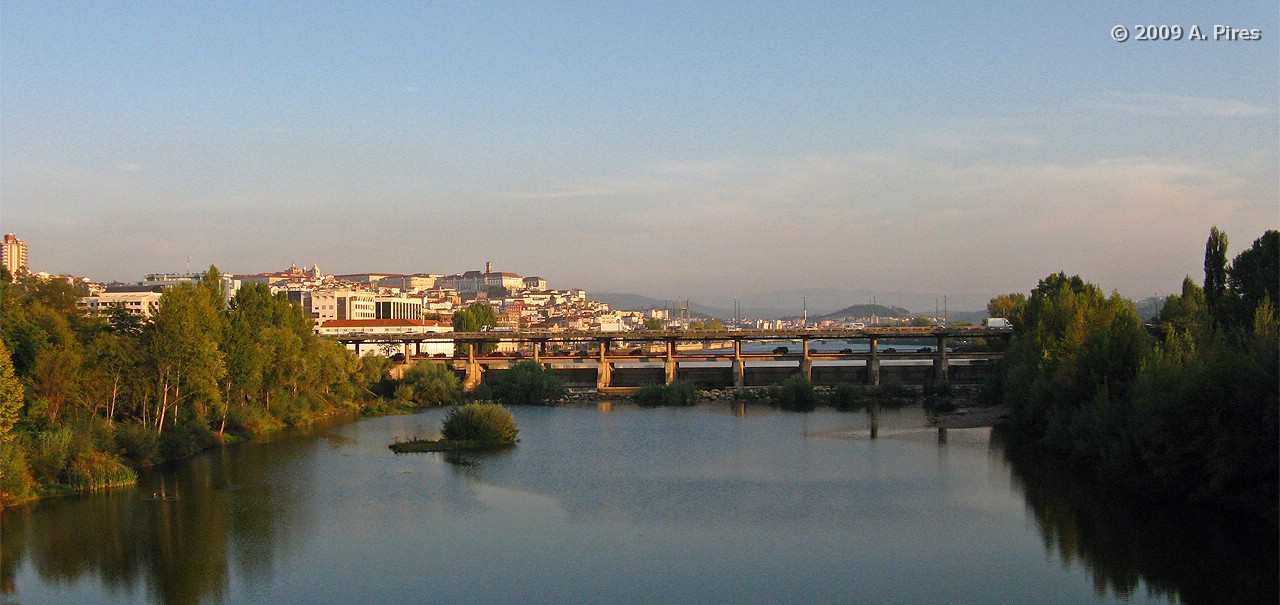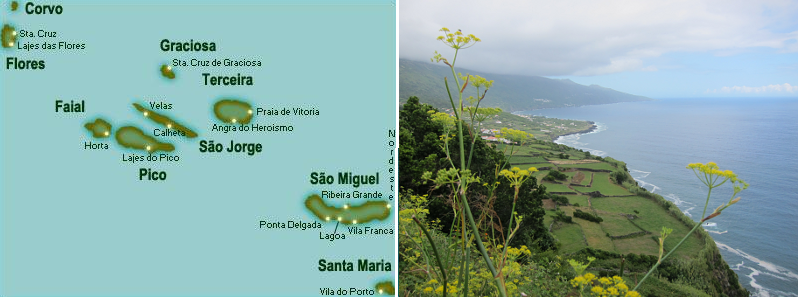Eutrophication symptoms: the Portuguese Continental Shelf
The Portuguese Continental Shelf (PCS) typically shows a width smaller than 30 km. As a consequence, the ecological processes are influenced by both terrestrial nutrient loads and ocean-margin exchanges (upwellings). The coastal upwellings enhance the importance of exchanges across the shelf border, and act as a significant source of nutrients to the coastal zone.

Portugal map with the main river mouths. Credit: Gamito et al., 2012.
Eutrophication-related problems have not yet been reported in the coastal zone. However, amongst the estuaries, the Sado estuary is considered eutrophicated and the Mondego estuary is potentially under eutrophication threat. The Tagus and the Douro estuaries, that generate the highest terrestrial loads, are not considered eutrophied. There are many reported HAB episodes along the Portuguese coast, but they are not related with eutrophication. However, some studies have reported HAB events in the Sado estuary that are associated with nutrient enrichment and with nutrient imbalance (Si:N/P).

Mondego river. Credit: Antero Pires via Wikimedia Commons
Modelling eutrophication and its consequences in the PCS requires a nested physical-ecological model that allows to study transboundary nutrient transport with the relevant scale, from estuarine processes to margin upwellings. Moreover, by including the Azores archipelago in the model, the role of deep ocean nutrient remobilization may also be assessed.

Azores archipelago (left; credit: J.Martin) and Pico Island (right; credit: G.Lacroix)
See also:

